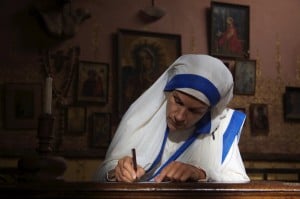Did you know that Princess Diana of Wales had a relative who may become a Catholic saint?
I once knew this story–but it had fallen from memory until I read an article by Simon Caldwell in today’s Catholic Herald. In his article about Prince William, Caldwell mentioned the great-great-great uncle of the Prince’s mother, Diana, who was an Anglican vicar until he converted to Catholicism at the age of 31. Once Catholic, he was ordained a priest and ultimately became a Passionist.
Caldwell explained how Father Ignatius (the former George Spencer) was originally drawn to Christianity:
“He had not shown strong feelings toward Christianity until he saw Mozart’s Don Giovanni during a visit to Paris and was struck by a scene in which the anti-hero Giovanni, a seducer and blasphemer, is carried off to Hell by a troop of devils.”
This single encounter with great art propelled Spencer toward faith–but there were other influences, as well.
He was named pastor of an Anglican parish in Brighton; and there he worked tirelessly on behalf of the poor, the sick and dying. While at Brighton, though, George began to question his Anglican faith. His quest for Truth led him to investigate other traditions–everything from High Church to Evangelical. He questioned the validity of the Thirty-Nine Articles, the historically defining statements of doctrine upon which the English Reformation was based. His earlier studies of Scripture failed to support the doctrines which were central to Anglicanism.
Then, the turning point: Spencer began to read the writings of the Early Church Fathers. Like many converts in the modern day, Spencer found in the writings of St. John Chrysostom and Gregory the Great an explanation of the differences between Catholic and Protestant thought.
He continued to learn: Spencer met several Catholic priests who encouraged him to continue his reading. A series of three anonymous letters encouraged him to give further thought to Catholicism. And then George Spencer met Ambrose Phillipps de Lisle, a recent English convert to Catholicism. After several encounters with de Lisle, Reverend George Spencer resigned his pastorate on January 30, 1830, and was received into the Catholic Church.
The new young Catholic, hoping to lessen the blow to his parents by receding from the public eye, went to Rome to study at the Venerable English College. There he studied Catholic tradition and was first introduced to the Passionists, the order he would later join. While a student in Rome, George wrote the story of his conversion from Protestantism to the Catholic faith, which was published in Catholic journals of the time.
In 1898, when the Priory Church of the Holy Cross was being sold, George Spencer’s friend Ambrose de Lisle spoke of the priest’s courageous conversion:
“To renounce the errors and prejudices imbibed in childhood is, perhaps, the most difficult act of duty that a human being can ever be called upon to perform; there it was that he embraced the Catholic faith, thereby accomplishing an act that it will ever be memorable in the history of the Church; an act, the fame of which has penetrated wherever the faith of the Church is preached, from one end of the world to the other, and deservedly so; for it was accompanied with the utter renunciation of all his worldly goods and prospects, all of which he cheerfully sacrificed to follow the dictates of his upright conscience, that he might possess that greatest of all blessings —the communion and privileges of Christ’s true Church.”
Father Ignatius worked with Irish migrants to England, some of them so poor that they were forced to live in caves dug out of slag heaps. He expressed his wish that he could die in poverty like Jesus–“in a ditch, unseen and unknown.” That wish was fulfilled, Simon Caldwell explains, when he had a seizure on a country lane near Edinburgh, Scotland, and died there alone.











